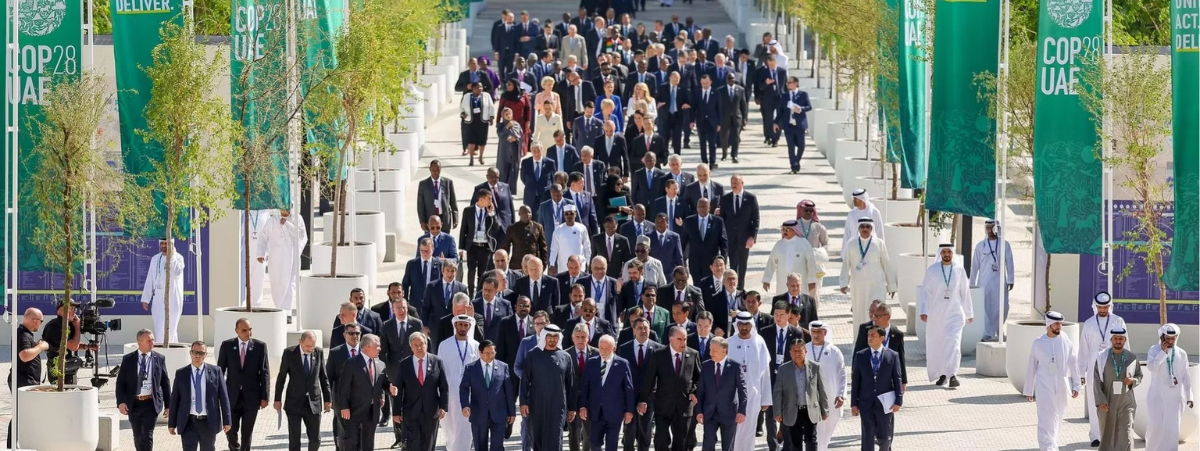Football leaves more than just players’ footprints on the field: carbon emissions from games, travel and merchandising are considerable, and need to be tackled.
Climate change is causing disruption around the world, including in sports. Extreme heat waves can affect athletes’ ability to perform, torrential rains can flood stadiums and poor air quality can cause damade to the health of players and supporters.
With the World Football Summit just around the corner, and the FIFA World Cup not far behind, now is the perfect time to look at the carbon footprint associated with this sport, and what can be done to reduce it.
Calculating the carbon footprint of football
It is estimated that the 2018 Russia World Cup released 2.16 million tons of greenhouse gases – equivalent to more than 465,000 cars on the road for an entire year! To reach this number, experts used the GHG Protocol’s methodology and its three scopes. They took into account the construction of facilities for the event, supporters’ travel to and from venues, the energy used for light, heating, cooling and cooking during the event, as well as the emissions associated with manufacturing merchandise.
The World Cup is definitely the sector’s biggest event, and fortunately for the planet, it only takes place every four years, but football itself never stops. England’s Premier League alone consists of 38 games per season, and the UEFA Champions League organizes 125 matches every year.
In 2017, the University of Essex calculated the total of GHG emissions from transport to and from stadiums for tier 3 football games in the 2012/13 season, which was estimated at 56,237 tons of CO2e. And the bigger the game, the larger its carbon footprint, as supporters tend to travel further for important matches.
To calculate their emissions, football clubs need to count not just transport to and from games, but also all the materials purchased for players, business travel and even the emissions associated with the production of merchandising to sell to fans. This involves mapping all of the club’s activities, purchases and sales.
Climate action in football
Football is the most popular sport in the world – and one of the most lucrative, with a market value of about US$1.8 trillion in 2019. As such, it has the potential to unite people and drive cultural change in ways few other activities can. It is time to put this popularity and capital to good use by educating football fans about climate change and implementing innovative solutions.
For instance, the organizers of the 2022 Qatar World Cup have promised to host the first carbon-neutral World Cup, with mitigation measures including building a reusable stadium from shipping containers, installing solar-powered stadium air conditioning, and growing trees irrigated by treated sewage water to absorb CO2 emissions from the atmosphere. These measures are welcome, considering that Qatar has built seven new stadiums, an entire new city and over 100 new hotels and roads for the event, bringing its carbon footprint to an estimated 3.6 million tons.
Football clubs also need to calculate and reduce their footprint, offset the remainder, and talk to fans about how they did it. Athletes should become role models, lobbying for climate action and leading by example.
For instance, Forest Green Rovers in England is the first club to commit to net zero: they are currently building a net-zero stadium with 500 trees and several electric vehicle charging stations. Several other clubs have signed up to the UN Sports for Climate Action framework, with various commitments.
How ClimateTrade can support the decarbonization of football
ClimateTrade is an established carbon neutrality partner for sporting events: we supported the BBVA Open Internacional Valencia Tennis Tournament in calculating and offsetting its emissions, and we will also be offsetting the emissions of the World Football Summit in Sevilla on September 28-29.
The ClimateTrade marketplace gathers more than 60 international carbon mitigation projects on a blockchain platform, making carbon offsetting transparent and traceable. Projects include renewable energy, reforestation, ecosystem conservation, community support and more, and all are certified by recognized standards and aligned with the UN Sustainable Development Goals, ensuring real impact in the fight against climate change.
The ClimateTrade API can also be used at stadiums or points of sale to allow fans to offset their carbon footprint while buying tickets and giving them information about specific projects and their environmental and social impact.
For more information about what ClimateTrade can do to support carbon-neutral football, contact us.







